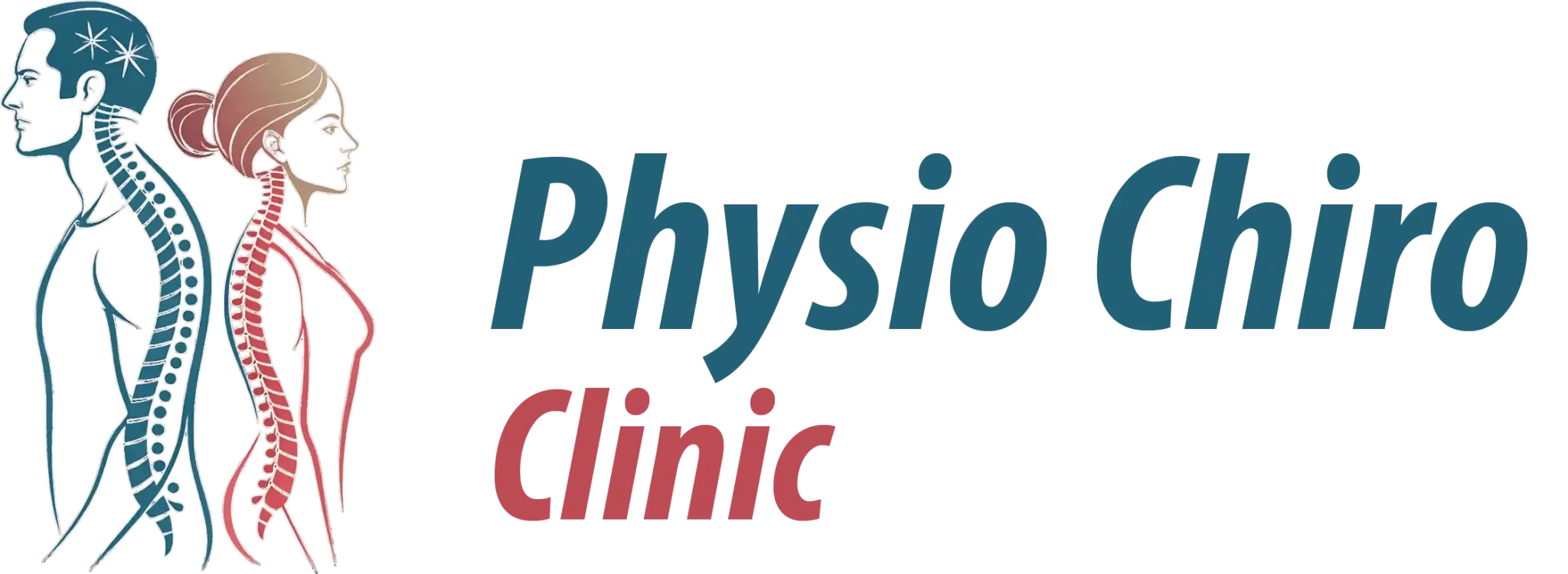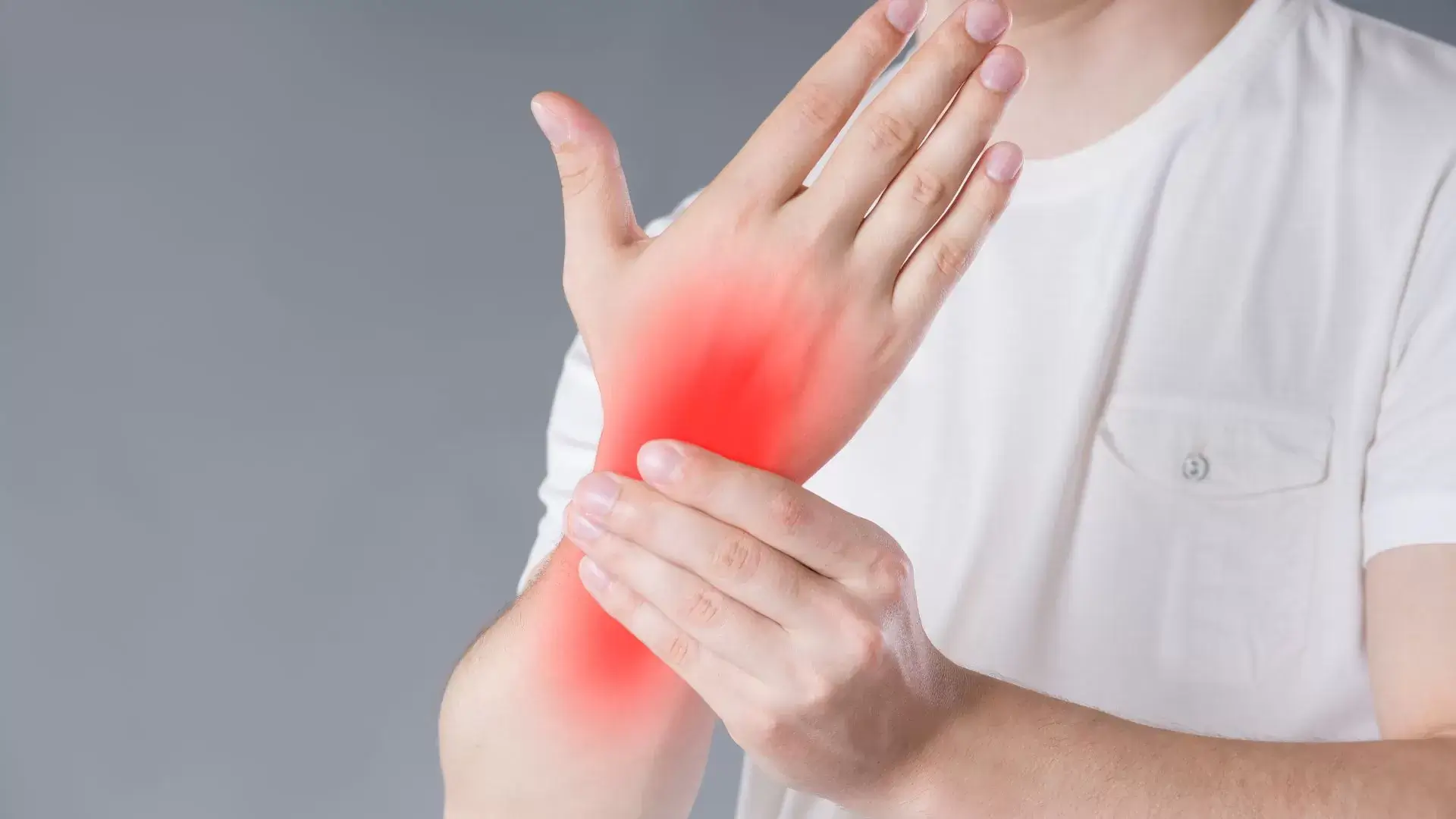Chiropractor for Knee Pain in Mississauga If you’re seeking a chiropractor for knee pain in Mississauga, we are here to assist. Our Top Mississauga Physiotherapy & Chiropractic Services provides thorough care tailored to your unique needs, addressing the root causes of discomfort. We focus on personalized treatment plans that may include chiropractic adjustments, physiotherapy, and supportive devices to enhance mobility and alleviate pain. Our goal is to restore your knee function and improve your overall well-being. We recognize how important it is to manage knee pain effectively, and we are committed to supporting you through every step of your recovery journey. Discover more about our approach and options available to you. About Our Physiotherapy and Chiropractic Services At Mississauga Physio Chiro Clinic, we offer a thorough range of physiotherapy and chiropractic services designed to effectively address knee pain and enhance overall mobility. We recognize how debilitating chronic knee pain can be, and our team is dedicated to providing targeted knee pain relief. Our orthopedic specialists conduct extensive knee pain diagnoses to identify the underlying issues contributing to your discomfort. Once we’ve pinpointed the problem, we tailor a personalized knee pain treatment plan that may include a combination of physiotherapy and chiropractic techniques. Our approach often incorporates knee rehabilitation and joint inflammation management to promote healing and restore function. We also emphasize knee strengthening exercises that help build muscle support around the joint, reducing the risk of future injuries. Key Causes of Knee Pain Addressed by Chiropractors Understanding the key causes of knee pain is crucial for developing an effective treatment plan, and our chiropractors are skilled in identifying issues such as misalignment, injury, and arthritis that can contribute to your discomfort. Knee pain can stem from various causes, including knee injuries that result from sports or accidents, leading to symptoms like swelling and reduced mobility. Arthritis is another significant factor, as it can cause knee degeneration over time, making everyday activities painful. When we assess your condition, we consider these knee pain causes to tailor our approach for ideal knee pain recovery. In addition to injuries and arthritis, other underlying issues such as tendinitis or bursitis may also contribute to knee discomfort. Recognizing these factors is crucial for us to create a thorough treatment plan aimed at restoring your knee mobility and alleviating pain. Our goal is not only to address your current knee pain symptoms but also to prevent future issues by promoting overall joint health. By understanding and addressing these key causes, we can guide you toward effective recovery and a return to an active lifestyle. Recognizing the Symptoms of Knee Pain Knee pain can manifest through a variety of symptoms, and recognizing them early is important for effective treatment and recovery. We should pay close attention to signs like joint pain and knee stiffness, as these can indicate underlying issues. Acute knee pain may arise suddenly, often due to a sports injury or overuse injury, making it essential to assess our activity levels and any recent changes in routine. Knee inflammation can also be a significant red flag, as it often signals an underlying condition such as knee arthritis. We need to be aware of joint stiffness that occurs after periods of inactivity, which can affect knee function and lead to knee instability. If we experience persistent discomfort or swelling, it’s important not to dismiss these symptoms, as they can worsen over time. How Chiropractors Provide Relief for Knee Pain Recognizing the symptoms of knee pain is the first step, but knowing how chiropractors can provide relief is equally important for our recovery journey. Chiropractors adopt a holistic approach to treat knee pain, focusing on the underlying issues rather than just the symptoms. They often incorporate physical therapy techniques, which help strengthen the muscles around the knee, reducing the risk of knee sprains and strains. In addition to targeted knee pain exercises, chiropractors may recommend anti-inflammatory treatments to alleviate swelling and promote healing. For patients with knee osteoarthritis, regenerative medicine options like platelet-rich plasma therapy can be beneficial, helping to repair damaged tissues and reduce pain. Chiropractors also recognize when knee injections might be necessary for more immediate relief, ensuring we have the best options available. Furthermore, they provide valuable advice on knee support, suggesting braces or supports to stabilize the joint during recovery. Chiropractic Techniques for Joint Realignment Chiropractors utilize various techniques to realign joints, guaranteeing that we can regain ideal function and alleviate pain effectively. When addressing knee pain, we often start with a thorough assessment of knee biomechanics and muscle imbalances. By identifying these issues, we can tailor our chiropractic techniques for ideal joint realignment. One common approach involves gentle adjustments to the knee and surrounding joints, which can help restore proper alignment and function. This process is essential, especially for those experiencing chronic inflammation or post-surgical complications. In addition to adjustments, we may recommend knee pain therapy that incorporates physiotherapy for knee pain, focusing on strengthening exercises and stretches to improve mobility. We also recognize the importance of lifestyle factors such as weight management, which can greatly impact knee health. By advising on the use of mobility aids when necessary, we guarantee that our patients maintain their independence while protecting their joints. Ultimately, our goal is to provide thorough care that not only addresses the symptoms but also promotes long-term wellness and prevents the need for invasive procedures like knee surgery. Together, we can achieve healthier joints and a pain-free lifestyle. Effective Care for Sports-Related Knee Injuries Addressing joint realignment is a foundational step in managing sports-related knee injuries, as these injuries often stem from biomechanical issues and muscle imbalances that can be effectively treated through targeted chiropractic care. By focusing on proper alignment, we can help reduce the risk of conditions like ACL injuries and meniscus tears, which are common in athletes. In our practice, we utilize specialized techniques to address knee pain, including knee tendonitis and knee bursitis. Implementing a thorough approach to knee pain prevention is vital. We often
Chiropractor for Whiplash
Chiropractor for Whiplash in Mississauga If you’re looking for a chiropractor for whiplash in Mississauga, we recognize the importance of finding skilled care. Whiplash can cause significant discomfort and challenges in daily life, especially after an accident. Early intervention through chiropractic treatment can greatly promote healing and alleviate symptoms. Our approach focuses on spinal alignment and tailored rehabilitation exercises designed to enhance neck mobility and reduce pain. We’re dedicated to ensuring you feel supported throughout your recovery journey. For more insights on effective treatment options and valuable tips, we encourage you to keep exploring the resources available to you. About Our Physiotherapy and Chiropractic Services At Mississauga Physio Chiro Clinic, we specialize in providing extensive physiotherapy and chiropractic services tailored to effectively treat whiplash and support our patients’ recovery journeys. We recognize that whiplash can lead to significant neck pain and discomfort, affecting daily activities and overall quality of life. That’s why our dedicated team focuses on thorough whiplash treatment plans that include both physiotherapy and chiropractic care. Through customized neck rehabilitation programs, we aim to restore spinal alignment and enhance mobility. Our approach incorporates targeted exercises, manual therapy, and advanced pain management techniques to alleviate symptoms and promote healing. We emphasize the importance of accident rehabilitation, ensuring our patients receive the necessary support and guidance throughout their whiplash recovery process. Our Mississauga’s Best Physiotherapy & Chiropractic Services commitment to patient care means we listen closely to your concerns and adapt our treatment strategies to meet your unique needs. We believe that effective whiplash physiotherapy not only addresses immediate pain but also helps prevent future issues. By working together, we can help you regain functionality and improve your quality of life after experiencing whiplash. Your journey to recovery starts here, and we’re excited to be a part of it. Recognizing the Symptoms of Whiplash How can we identify the common symptoms of whiplash to guarantee timely and effective treatment? Recognizing whiplash symptoms is essential, especially after a car accident. We may notice neck strain, which can manifest as neck stiffness and tenderness in the affected areas. Many of us experience shoulder pain or headaches that seem to stem from the neck. It’s important to pay attention to changes in neck mobility; if we find it difficult to turn our heads or look up and down, this could indicate a more serious issue. Symptoms may not appear immediately, sometimes delaying a proper whiplash assessment. We should remain vigilant, as untreated whiplash can lead to chronic whiplash conditions, affecting our daily lives. If we experience any of these symptoms, it’s critical to consult a healthcare professional. Early intervention can greatly improve recovery outcomes and prevent long-term complications. By understanding the signs of whiplash, we can take proactive steps toward our health and well-being. Remember, the sooner we address these symptoms, the better our chances of a full recovery. Understanding the Causes of Whiplash Injuries Understanding the causes of whiplash injuries is essential, as they often result from sudden, forceful movements of the head, typically during car accidents or sports-related incidents. Most commonly, whiplash injuries occur in rear-end collisions, where the rapid acceleration and deceleration can lead to significant neck trauma. When we experience a whiplash injury, the cervical spine can be severely affected, resulting in soft tissue damage to the muscles and ligaments surrounding the neck. This may lead to conditions such as cervical sprain, where the ligaments are stretched or torn, and muscle spasms, which can cause debilitating pain and discomfort. Moreover, the impact of these accident-related injuries can vary, making whiplash diagnosis vital for proper treatment and injury recovery. It’s important to recognize that not all symptoms appear immediately; some may develop days after the incident. By understanding the underlying causes of whiplash, we can better appreciate the complexities of recovery and the importance of seeking appropriate care. Recognizing these factors can help us take proactive steps toward healing and regaining our quality of life after such an injury. The Role of Chiropractic Care in Whiplash Recovery Chiropractic care plays an essential role in whiplash recovery, helping to alleviate pain, restore mobility, and promote overall healing in the affected areas. Our approach to whiplash therapy begins with a thorough assessment by a qualified whiplash chiropractor, who identifies the specific needs of each individual. We focus on spinal adjustments to correct misalignments, which can relieve both acute neck pain and chronic neck pain. Incorporating targeted neck exercises into our rehabilitation therapy is significant for restoring strength and flexibility. These exercises not only enhance neck alignment but also support soft tissue healing, which is critical after an injury. Additionally, we emphasize the importance of post-accident care, ensuring that our patients receive ongoing support throughout their recovery journey. What to Expect During a Whiplash Diagnosis During a whiplash diagnosis, we’ll carefully evaluate your symptoms and medical history to create a personalized treatment plan tailored to your recovery needs. Initially, we’ll conduct a thorough pain evaluation, focusing on the specific nature of your neck injury. This helps us understand the extent of your cervical injury, whether it’s a cervical strain from accident trauma or a more complex issue. At our neck injury clinic, we’ll ask about the circumstances of your injury, your pain levels, and any functional limitations you may be experiencing. Our goal is to assess not just the physical aspects, but also how your pain impacts daily life. Once we gather enough information, we may recommend physical therapy and rehabilitation exercises designed to promote whiplash relief and enhance your recovery. These exercises will target muscle strength, flexibility, and overall function, ensuring a thorough approach to pain relief. We’re committed to guiding you through this process, providing compassionate care every step of the way. Our aim is to support you in achieving ideal recovery, so you can return to your normal activities as soon as possible. Effective Chiropractic Techniques for Treating Whiplash When it comes to treating whiplash, we employ a range of effective chiropractic techniques tailored to alleviate pain and restore
Chiropractor for Thoracic Outlet Syndrome
Chiropractor for Thoracic Outlet Syndrome in Mississauga If you’re seeking a Chiropractor for Thoracic Outlet Syndrome (TOS) in Mississauga, we’re here to help. Our Experienced Physiotherapy & Chiropractic Clinic in Mississauga specializes in diagnosing and treating TOS through targeted chiropractic techniques. We focus on relieving upper extremity pain, numbness, and tingling. With personalized treatment plans, we aim to decompress nerves and blood vessels affected by this condition. Our holistic approach incorporates gentle exercises and ergonomic solutions to enhance your recovery. We recognize the challenges that come with TOS, and we’re committed to supporting your journey to wellness. There’s plenty more to discover about our services tailored specifically for you. About Our Physiotherapy and Chiropractic Services At Mississauga Physio Chiro Clinic, we specialize in providing thorough physiotherapy and chiropractic services tailored to address the unique needs of those suffering from Thoracic Outlet Syndrome. We recognize that this condition can lead to debilitating shoulder pain, arm pain, and neck pain, greatly impacting your daily life. Our extensive approach begins with a thorough thoracic outlet diagnosis, allowing us to identify the specific issues affecting you. Once we’ve pinpointed the underlying causes, we develop personalized thoracic outlet treatment plans that incorporate targeted physiotherapy and chiropractic services. These plans often include specialized thoracic outlet exercises designed to improve mobility, strength, and overall function. We also emphasize the importance of ergonomic adjustments, helping you create a more supportive environment at work or home to alleviate discomfort. Our team is committed to thoracic outlet syndrome management, ensuring you receive ongoing support and education throughout your recovery journey. We believe in empowering our patients with the knowledge and tools they need to take control of their health. Together, we’ll work to reduce your symptoms and enhance your quality of life, guiding you every step of the way. Exploring the Causes and Risk Factors of Thoracic Outlet Syndrome Understanding the causes and risk factors of Thoracic Outlet Syndrome is essential for effectively managing its symptoms and preventing further complications. Thoracic outlet syndrome (TOS) arises from thoracic outlet compression, affecting the nerves and blood vessels that pass through this area. We often see two primary types: neurogenic TOS, which relates to nerve compression, and vascular TOS, which involves blood vessels. Several thoracic outlet syndrome causes and risk factors can contribute to its development. Scalene muscle tightness, for instance, can lead to compression of the nerves and vessels. Poor posture is another significant factor; slouching can exacerbate strain on the thoracic outlet. Additionally, repetitive strain injuries from activities such as heavy lifting or overhead work can increase the likelihood of developing TOS. In some cases, trauma-induced TOS may occur due to accidents or injuries. For those severely affected, interventions like first rib resection might be necessary to relieve compression. However, implementing posture correction techniques and addressing muscle tightness can often help alleviate symptoms. By understanding these factors, we can work together to create a tailored treatment plan to improve our overall well-being. Understanding the Three Types of TOS: Neurogenic, Venous, and Arterial Thoracic Outlet Syndrome can be categorized into three distinct types: neurogenic, venous, and arterial, each presenting unique symptoms and requiring tailored treatment approaches. In neurogenic TOS, we often see nerve compression, leading to symptoms like tingling in fingers and numbness in hand. This type is the most common and typically responds well to thoracic outlet physical therapy aimed at relieving pressure on the nerves. Venous TOS, on the other hand, involves blood vessel compression, which can cause swelling and discoloration in the arm. This type may require more urgent intervention, and in some cases, thoracic outlet surgery may be necessary to alleviate the pressure on the veins. Lastly, arterial TOS is the rarest form, characterized by blood vessel compression affecting circulation. Symptoms can include coldness in the arm and increased fatigue during activity. Understanding these distinctions helps us recognize the specific thoracic outlet syndrome symptoms we might be dealing with, guiding us toward appropriate treatment options. By working together with healthcare professionals, we can develop a thorough approach tailored to each type of TOS, ensuring the best possible outcomes for recovery. Recognizing the Symptoms of Thoracic Outlet Syndrome Recognizing the symptoms of Thoracic Outlet Syndrome (TOS) is essential for early intervention, as various signs can indicate the type and severity of the condition we might be facing. Common thoracic outlet syndrome symptoms include upper extremity pain, numbness, and tingling sensations that often extend down the arms. These symptoms can be exacerbated by poor posture, highlighting the importance of understanding how thoracic outlet syndrome and posture are interconnected. We should also be aware of specific triggers that may provoke discomfort, such as repetitive overhead activities or prolonged sitting positions. Implementing thoracic outlet stretches can help alleviate some of the tension and improve our overall mobility. In clinical settings, healthcare professionals may use thoracic outlet syndrome tests like Adson’s test, Roos test, and Wright’s test to assess our condition further. If we suspect we’re experiencing TOS symptoms, seeking thoracic outlet syndrome therapy from a qualified chiropractor can be beneficial. Early recognition and intervention can greatly improve our quality of life and reduce the risk of chronic pain. How Thoracic Outlet Syndrome Is Diagnosed: Tests and Assessments Diagnosing Thoracic Outlet Syndrome involves a combination of thorough physical examinations and specific tests that help us pinpoint the underlying issues contributing to our symptoms. We begin by discussing our medical history and any thoracic outlet symptoms we’re experiencing, such as pain, numbness, or tingling in our arms. To further assess our condition, healthcare professionals often perform Adson’s test and Wright’s test. These tests evaluate the blood flow and nerve function in the affected areas, allowing us to understand the severity of the syndrome. In addition to these tests, imaging studies like X-rays or MRIs may be recommended to rule out any structural abnormalities that could lead to complications. It is crucial to address these issues early to prevent long-term thoracic outlet syndrome complications. Once diagnosed, we can explore various approaches for thoracic outlet
Physiotherapy for Strains and Sprains
Physiotherapy for Strains and Sprains in Mississauga We recognize how essential effective physiotherapy is for recovering from strains and sprains, and in Mississauga, we offer specialized Physiotherapy for Strains and Sprains with personalized care tailored to each individual’s needs. Our approach includes the RICE method for initial recovery, followed by targeted exercises that enhance strength, flexibility, and overall function. We focus on restoring stability and mobility while providing education on injury prevention. Our experienced physiotherapists in Mississauga assess your condition thoroughly to create a detailed rehabilitation plan. By prioritizing your health, we guarantee a smooth path to recovery. Explore with us how we can support your journey to wellness further. About Our Physiotherapy and Chiropractic Services At Mississauga Physio Chiro Clinic, we specialize in providing extensive physiotherapy and chiropractic services tailored to address strains and sprains effectively. We recognize that soft tissue injuries can greatly impact your daily life and athletic performance, which is why our dedicated team is here to assist you with thorough injury management strategies. Our approach includes thorough strain diagnosis to identify the root cause of your discomfort. We develop personalized rehabilitation for sprains that incorporates essential first aid for sprains, ensuring you receive ideal care from the outset. Our skilled therapists guide you through targeted mobility exercises designed to restore function and flexibility, promoting a swift recovery. Additionally, we emphasize the importance of strengthening for sprains, helping you build resilience against future injuries. For athletes, we offer specialized programs that integrate athletic training with our physiotherapy and chiropractic services, ensuring you’re not only recovering but also enhancing your performance. Together, we’ll work towards your goals, providing ongoing support and tailored strategies to help you regain your strength and mobility. Your recovery journey is our priority, and we’re committed to guiding you every step of the way. Exploring Strains and Sprains: A Comprehensive Overview Understanding the nuances of strains and sprains is essential for effective recovery and prevention, as these common injuries can greatly affect both daily activities and athletic performance. Strains often involve the stretching or tearing of muscles or tendons, leading to muscle strain, joint pain, and inflammation. On the other hand, sprains affect ligaments, which connect bones at joints. A ligament sprain can result in swelling and significant discomfort. Both injuries can cause soft tissue damage, impacting mobility and function. Tendon strain, a specific type of muscle strain, can also lead to chronic pain if not managed properly. The symptoms of these injuries can overlap, but recognizing the differences helps us tailor our approach to treatment. In our quest for injury prevention, we should focus on proper warm-ups, strength training, and flexibility exercises. It’s vital to listen to our bodies, as early intervention can make a difference between a minor issue and a severe injury. By understanding the mechanisms behind strains and sprains, we empower ourselves to make informed decisions about our health and recovery strategies. Let’s work together to stay active and resilient. Key Factors Leading to Strains and Sprains What factors contribute to the occurrence of strains and sprains, and how can we mitigate their risk in our daily activities and sports? We often encounter various situations that can lead to injuries, whether it’s an ankle sprain during a game or a wrist sprain while lifting heavy objects. Acute sprains, like knee sprains, typically arise from sudden movements or falls, while chronic strains often develop from repetitive motions or overuse injuries. Joint instability plays a significant role in these injuries, as weakened ligaments can easily suffer from ligament injury or tendon injury. Additionally, inadequate warm-up or stretching before physical activity increases the likelihood of sustaining sports injuries. We can reduce these risks by incorporating proper training techniques, maintaining strength and flexibility, and being mindful of our body mechanics during daily tasks. Recognizing the Symptoms of Strains and Sprains Recognizing the symptoms of strains and sprains is essential for effective treatment and recovery, especially since these injuries can occur suddenly during sports or daily activities. We need to be aware of the common indicators so we can seek appropriate care. Strain symptoms often include pain, swelling, and limited mobility, whether it’s a back strain, shoulder strain, hamstring strain, or quadriceps strain. In the case of a muscle tear, we may experience sharp pain and immediate weakness in the affected area. On the other hand, sprain symptoms typically involve a ligament tear, characterized by swelling, bruising, and instability in the joint. If we notice tenderness and difficulty bearing weight, it’s vital to assess the severity of the injury. Additionally, tendon tears can lead to persistent pain and reduced function. Understanding these signs can guide us in monitoring our condition and determining when to pursue soft tissue rehabilitation. By recognizing the symptoms early, we can initiate appropriate interventions, allowing for a smoother recovery process and a return to our activities. How Strains and Sprains Are Diagnosed Diagnosing strains and sprains typically involves a thorough evaluation of our medical history, physical examination, and sometimes imaging tests to determine the extent of the injury. During our consultation, we’ll discuss any specific incidents that led to the injury, like a groin strain or a calf strain, and we’ll evaluate symptoms such as bruising and tenderness. Our physical examination will focus on the affected area, checking for swelling and evaluating the range of motion. If we suspect a more complex injury, like a rotator cuff strain or a severe sprain, imaging tests such as X-rays or MRIs may be recommended to rule out fractures or more serious damage. For less severe injuries, like a thumb sprain or a finger sprain, we can often diagnose based on our findings during the physical examination. A sprain diagnosis will guide us in developing an appropriate treatment plan. Understanding the nature of our injury is essential as it helps us determine the best physical therapy for strains. By accurately diagnosing our condition, we can effectively address our recovery needs and set realistic expectations for healing. Effective Physiotherapy Solutions for Muscle Strains
Physiotherapy for Sciatica
Physiotherapy for Sciatica Treatment in Mississauga In Mississauga, we offer specialized physiotherapy services designed to alleviate sciatic pain and improve overall well-being. Our approach includes thorough assessments to understand each individual’s unique condition, followed by personalized treatment plans. We utilize a combination of targeted exercises, stretches, and manual therapy aimed at strengthening spinal muscles and enhancing posture. Our Experienced Physiotherapy & Chiropractic Team in Mississauga prioritizes your comfort and recovery, ensuring that you receive the care you need. Through our holistic strategies, we empower you to manage symptoms effectively and prevent recurrences. There’s more to explore about our treatments and how we can help you regain your quality of life. About Our Physiotherapy and Chiropractic Services At Mississauga Physio Chiro Clinic, we’re dedicated to providing thorough physiotherapy and chiropractic services tailored to alleviate sciatic pain and enhance overall well-being. Located at 1834 Lakeshore Rd W #6C, Mississauga, ON L5J 1J7, we recognize how debilitating sciatica can be. Our team is committed to offering effective sciatica treatment options that focus on providing sciatica relief through personalized care. We specialize in physical therapy for sciatica, combining techniques such as sciatica exercises and stretches to strengthen the muscles around the spine and improve flexibility. Our chiropractic care for sciatica focuses on spinal alignment, helping to relieve nerve pain and restore proper function. By addressing the root causes, we aim to reduce symptoms and prevent future issues. Patients can expect a thorough assessment during their first visit. We’ll develop a tailored treatment plan that meets individual needs, ensuring a supportive environment throughout the healing process. If you’re experiencing sciatica symptoms, don’t hesitate to reach out to us at (647) 372-1209. Together, we can work towards alleviating your pain and enhancing your quality of life through our dedicated physiotherapy and chiropractic services. Exploring Sciatica: Causes and Key Symptoms Understanding sciatica involves recognizing its common causes and key symptoms that can greatly impact daily life. Sciatica is primarily characterized by pain that radiates along the path of the sciatic nerve, which runs from the lower back through the hips and buttocks down to each leg. This sciatic pain often arises from nerve compression, typically due to a herniated disc or spinal stenosis. We may experience various sciatica symptoms, including lower back pain, tingling sensations, and muscle weakness in the affected leg. These symptoms can interfere with our daily activities, making it difficult to sit, stand, or walk comfortably. Additionally, radiculopathy may occur, where nerve irritation leads to sharp, shooting pains or numbness along the nerve pathway. Identifying the underlying sciatica causes is essential for effective treatment. By understanding these aspects, we can take informed steps toward relief and recovery. Seeking physiotherapy can be an important part of our journey, as it helps address both the symptoms and root causes, improving our overall quality of life. Understanding the Sciatic Nerve and Its Role in Pain The sciatic nerve, the largest nerve in the body, plays an essential role in transmitting signals between the lower back and the legs, making its health important for our mobility and comfort. Understanding the sciatic nerve anatomy is significant as it consists of nerve roots that emerge from the lumbar and sacral spine. When we experience sciatic nerve compression or nerve root irritation, it can lead to considerable discomfort and pain. Conditions like piriformis syndrome and degenerative disc disease may contribute to sciatic nerve irritation, causing both acute sciatica and chronic sciatica. For instance, spinal stenosis can result in the narrowing of the spinal canal, putting pressure on the nerve roots, leading to lumbosacral radiculopathy. This creates sensations of pain, tingling, or numbness that can travel down the leg. Comprehensive Physiotherapy Evaluation for Sciatica A thorough physiotherapy evaluation for sciatica is essential for identifying the specific factors contributing to sciatic nerve pain and guiding effective treatment strategies. During our extensive physiotherapy evaluation, we assess your medical history, perform physical examinations, and discuss your symptoms, including any leg pain, to arrive at an accurate sciatica diagnosis. This process helps us understand if there’s lumbar radiculopathy, a pinched nerve, or other nerve entrapment syndromes at play. By pinpointing the underlying causes, we can tailor our approach to your unique situation. We’ll also provide you with sciatica pain relief tips and recommend specific sciatic nerve exercises to alleviate discomfort and promote healing. Posture correction is another critical aspect we’ll address, as it can greatly impact your recovery. Ultimately, our goal is to create a personalized plan that not only aims for immediate relief but also supports your long-term sciatica recovery. By taking a holistic view of your condition, we’re committed to helping you regain mobility and improve your quality of life. Together, we can navigate this journey toward pain-free living. Tailored Treatment Approaches for Effective Sciatica Relief Effective sciatica relief requires us to implement tailored treatment approaches that address the unique needs and underlying causes of each individual’s condition. For many, sciatica arises from issues like a herniated disc in the lumbar spine, leading to sciatic nerve inflammation. To effectively manage this pain, we often combine various strategies, focusing on individualized pain management. One essential component is spinal decompression therapy, which can alleviate pressure on the sciatic nerve. Additionally, incorporating yoga for sciatica into our routine can enhance flexibility and strength, while targeted stretching for sciatica helps relieve tension in the affected areas. We also find that heat therapy for sciatica can provide immediate relief, soothing discomfort and promoting blood flow. Moreover, we encourage our patients to engage in sciatica-friendly activities that avoid exacerbating their condition. Exploring alternative sciatica treatments, such as acupuncture or massage, may also complement traditional therapies. By tailoring our approach and addressing each individual’s specific needs, we endeavor to create an all-encompassing treatment plan that fosters recovery and enhances overall well-being. Together, we can navigate the path to effective sciatica relief. Exercises to Alleviate Sciatica Pain and Promote Recovery Incorporating specific exercises into our treatment plan can greatly alleviate sciatica pain and support recovery efforts. These exercises help target the
Chiropractic Care for Headaches and Migraines
Chiropractic Care for Headaches and Migraines in Mississauga We recognize how debilitating headaches can be, and that’s why we’re dedicated to offering specialized chiropractic care for headaches in Mississauga. Our approach addresses the root causes, such as spinal misalignments and muscle tension. By developing personalized treatment plans, we focus on relieving discomfort from tension, migraines, and other headache types. Our holistic methods at Mississauga Physio Chiro Clinic may include adjustments, soft tissue therapy, and ergonomic assessments, all aimed at improving your overall wellness. If you’re ready to take steps toward relief, there’s more useful information waiting to guide your path to better health. About Our Physiotherapy and Chiropractic Services At our Trusted Physiotherapy & Chiropractic Clinic in Mississauga, we specialize in extensive physiotherapy and chiropractic services designed to alleviate headaches and enhance overall wellness. We recognize the impact that chronic headaches and tension headaches can have on daily life, which is why we focus on effective headache relief strategies tailored to each individual. Our approach to headache treatment involves identifying the underlying causes and developing a personalized headache management plan. Through chiropractic care for headaches, we address spinal misalignments that may contribute to headache symptoms, promoting better alignment and overall health. Our skilled practitioners employ various techniques to reduce muscle tension, improve circulation, and enhance mobility, all of which can aid in headache prevention. We take the time to listen to your concerns and work collaboratively to guarantee you receive the best possible care. By providing education on headache causes and prevention, we empower you to take control of your wellbeing. With our thorough physiotherapy and chiropractic services, we’re dedicated to helping you achieve lasting relief from headaches, allowing you to enjoy a more active and fulfilling life. Together, we can work towards effective solutions for your unique headache challenges. Exploring Headaches: Types, Causes, and Triggers Understanding the various types of headaches, along with their causes and triggers, is vital to developing effective treatment strategies that can enhance our approach to relief and prevention. Headache types can range from tension and migraine to cervicogenic headaches, each with distinct characteristics and underlying causes. For example, stress headaches often arise from tension in the neck and shoulders, leading to headache and neck pain that can be debilitating. Identifying headache triggers is essential; common triggers include stress, poor posture, and dehydration. By recognizing these factors, we can craft tailored headache treatment plans that address individual needs. Additionally, headache disorders can vary in frequency and intensity, making accurate headache diagnosis important for effective management. Incorporating headache prevention strategies into our daily routines can greatly improve our quality of life. This might involve stress management techniques, ergonomic adjustments, or regular physical activity. Ultimately, by thoroughly understanding the complexities of headaches, we can empower ourselves to take proactive steps toward effective relief and long-term prevention. Together, we can navigate the path to better head health. The Role of Chiropractic Care in Alleviating Headaches Chiropractic care offers a holistic approach to alleviating headaches by addressing underlying musculoskeletal issues that often contribute to pain and discomfort. As we explore the role of a chiropractor for headaches, we recognize how effective headache therapy can be in managing various types, including tension-type headaches. Research has shown that there’s a strong connection between headache and posture; poor alignment can lead to increased tension and pain. By employing targeted techniques, we can greatly improve posture and reduce headache triggers. We also emphasize the importance of integrating headache relief tips into daily routines, such as stress management strategies and ergonomic adjustments. In addition, headache massage and headache physical therapy can complement chiropractic adjustments, providing further relief and promoting relaxation. Understanding the headache triggers list is vital; it allows us to tailor our treatments to individual needs, addressing specific headache and stress connections. Ultimately, chiropractic care not only targets the symptoms but also works to resolve the root causes of headaches, fostering long-term wellness and improved quality of life. By considering these factors, we can create a thorough plan that effectively alleviates headache pain and enhances overall health. Targeted Chiropractic Solutions for Tension Headaches Finding targeted chiropractic solutions for tension headaches requires a thorough approach that addresses both the physical and emotional factors contributing to pain. As headache specialists, we acknowledge that tension headaches often stem from muscle tightness, stress, and poor posture, leading to headache and neck pain. Our chiropractic adjustments focus on realigning the spine and alleviating tension in the neck and upper back, which can greatly reduce headache patterns. We also provide personalized headache treatments, including soft tissue therapy and lifestyle modifications, to enhance headache relief. Moreover, we recognize the connection between headache and dizziness, which can complicate the experience of tension headaches. By addressing both the physical and emotional aspects of your condition, we aim to create extensive headache remedies tailored to your needs. It’s essential to work together to identify triggers and develop a plan that empowers you to manage your symptoms effectively. With the right chiropractic care, we can guide you towards a life with fewer headaches, improved well-being, and a better quality of life. Let’s take this journey towards headache relief together. Chiropractic Approaches to Managing Migraine Symptoms Many patients experience migraines as debilitating episodes that can disrupt daily life, but we can offer effective chiropractic approaches to help manage and alleviate these symptoms. Our goal is to address not just the headache intensity but also the associated issues like headache and nausea, fatigue, and hormonal factors that may trigger chronic migraines. We understand that many individuals rely on headache medications for relief. However, chiropractic care can provide alternative strategies, such as acupuncture for headaches and specific headache relaxation techniques. These methods can help reduce the frequency and severity of migraines without the drawbacks of pharmaceuticals. Incorporating practices like headache yoga can also be beneficial, promoting relaxation and mindfulness while targeting headache risk factors. We encourage our patients to explore these holistic options, as they can complement traditional treatments and enhance overall well-being. Effective Chiropractic Techniques
Chiropractic Care for Arthritis
Chiropractor for Arthritis in Mississauga If you’re seeking a chiropractor for arthritis in Mississauga, we specialize in tailored treatment plans that aim to reduce pain and enhance mobility. Our approach combines chiropractic adjustments, targeted exercises, and holistic strategies. We focus on improving joint function and alleviating stiffness associated with various types of arthritis, including osteoarthritis and rheumatoid arthritis. Our dedicated team understands the importance of personalized care, helping you maintain an active lifestyle while managing your symptoms. We’re committed to supporting your journey towards better health and well-being. There’s so much more to discover about our services that can enhance your quality of life. About Our Physiotherapy and Chiropractic Services At Mississauga Physio Chiro Clinic, we offer extensive physiotherapy and chiropractic services designed to alleviate arthritis pain and enhance your overall mobility. Our approach to arthritis treatment focuses on effective arthritis management strategies tailored to each patient’s unique needs. We recognize the challenges that come with joint pain and are committed to providing solutions that promote arthritis pain relief. Our physiotherapy sessions incorporate targeted arthritis exercises and arthritis physical therapy techniques to improve strength, flexibility, and function. We emphasize arthritis-friendly exercises that can be easily integrated into daily routines, allowing you to maintain an active lifestyle while managing symptoms. Additionally, we stay updated with the latest arthritis research, ensuring our treatments are informed by current findings. By combining evidence-based practices with compassionate care, we empower our patients to regain control over their arthritis and mobility. Whether you’re seeking relief from arthritis pain or looking to enhance your physical capabilities, our team is here to guide you every step of the way. Together, we can create a personalized plan that addresses your concerns and helps you achieve a better quality of life. Contact Us for Expert Chiropractic Care for Arthritis We’re here to provide expert chiropractic care specifically tailored to help you manage arthritis and improve your quality of life. Our Top Mississauga Physiotherapy & Chiropractic Clinic understands the complexities surrounding arthritis symptoms and the challenges they bring. We focus on alleviating joint inflammation and reducing arthritis flare-ups through personalized treatment plans. When it comes to arthritis diagnosis, we emphasize thorough assessments to determine the best approach for your specific needs. While arthritis medications can be helpful, many patients seek alternative options, and that’s where our chiropractic care comes in. We integrate arthritis and exercise into our programs, promoting movement that supports joint health without exacerbating discomfort. In addition, we believe in the power of community. We encourage participation in arthritis support groups, which can provide valuable insights and emotional support. We also recognize the connection between arthritis and stress; our techniques aim to alleviate not just physical symptoms but also the mental strain associated with chronic pain. If you’re looking for effective arthritis home remedies and expert guidance, we invite you to contact us. Together, we can create a thorough care plan that addresses all aspects of living with arthritis. Exploring Arthritis: Different Types and Underlying Causes Arthritis encompasses a variety of types and underlying causes, each presenting unique challenges and requiring tailored approaches for effective management. We often encounter osteoarthritis, the most common form, which results from wear and tear on the joints. Rheumatoid arthritis is another significant type, characterized by an autoimmune response that leads to chronic inflammation and joint damage. Psoriatic arthritis, linked to the skin condition psoriasis, can also impact joint function and overall health. Gout, a type of inflammatory arthritis, occurs due to high uric acid levels, causing painful flare-ups. Ankylosing spondylitis primarily affects the spine, leading to stiffness and discomfort. Additionally, lupus can manifest as autoimmune arthritis, affecting multiple body systems and presenting various challenges in treatment. Furthermore, arthritis and genetics play a vital role in determining a person’s susceptibility to these conditions. Understanding these different types of arthritis, including chronic arthritis, allows us to appreciate the complexity of each case. By recognizing the underlying causes, we can better support those affected and advocate for tailored management strategies that address their specific needs. Together, we can navigate the intricacies of arthritis and improve quality of life. The Role of Chiropractic Care in Arthritis Management Chiropractic care offers valuable support in managing arthritis symptoms, focusing on enhancing joint function and reducing pain through personalized treatment plans. When we consult a chiropractor for arthritis, they assess our unique needs and create targeted strategies for arthritis management. This can include specific arthritis stretches that improve flexibility and mobility while addressing joint degeneration. Moreover, chiropractic adjustments can lead to significant arthritis pain relief, allowing us to engage more fully in our daily activities. It is crucial to recognize the connection between arthritis and lifestyle; incorporating arthritis-friendly products, like compression gloves, can further support our journey to improved well-being. Additionally, we shouldn’t overlook the impact arthritis can have on mental health. By alleviating pain and improving physical function, chiropractic care can contribute positively to our overall emotional state. As we raise arthritis awareness, we empower ourselves and others to seek effective treatments and support. Incorporating chiropractic care into our arthritis management plan helps us take proactive steps toward living a more fulfilling life, despite the challenges posed by arthritis. Together, we can embrace healthier lifestyles and advocate for our needs. Customized Chiropractic Solutions for Arthritis Relief Finding customized chiropractic solutions can greatly enhance our approach to arthritis relief, tailored to our individual needs and circumstances. As we navigate arthritis and aging, we often face challenges like arthritis stiffness and fatigue. A chiropractor for arthritis can provide us with targeted adjustments and therapeutic exercises that cater specifically to our symptoms. Incorporating an anti-inflammatory diet into our lifestyle is another important aspect of our arthritis management. By working with our chiropractor, we can develop a holistic plan that includes dietary recommendations alongside manual therapies. Additionally, understanding the relationship between arthritis and weight can help us make informed choices, potentially alleviating some of our discomfort. We should also consider the importance of arthritis-friendly shoes to improve our mobility and reduce joint
Physiotherapy for Arthritis
Physiotherapy for Arthritis in Mississauga At our Best Physiotherapy & Chiropractic Clinic in Mississauga, we recognize that arthritis deeply affects many individuals. Our specialized Physiotherapy for Arthritis services focus on offering customized treatment plans designed to manage pain and enhance mobility. Our compassionate team uses targeted exercises to strengthen surrounding muscles, improving joint function and relieving discomfort. We also provide guidance on lifestyle modifications, diet, and ergonomic practices that support long-term joint health. By fostering an encouraging environment, we guarantee you feel supported throughout your journey. Together, we can navigate the challenges of arthritis and help improve your quality of life—there’s much more to discover about our services and community resources available to you. About Our Physiotherapy and Chiropractic Services At Mississauga Physio Chiro Clinic, we offer extensive physiotherapy and chiropractic services designed to alleviate arthritis symptoms and enhance your overall mobility. Our dedicated team understands the challenges that come with arthritis, and we’re committed to providing effective arthritis treatment tailored to your unique needs. We focus on arthritis management through personalized plans that include targeted arthritis exercises and arthritis-friendly products. Our arthritis physical therapy sessions are designed to improve strength, flexibility, and range of motion, helping you regain control over your daily activities. We emphasize arthritis-friendly exercises that can be easily integrated into your routine, ensuring you stay active while minimizing pain. Our compassionate approach means we genuinely care about your journey towards arthritis pain relief. We work closely with you to monitor progress, adapt techniques, and provide ongoing support, fostering a collaborative environment for your recovery. Exploring Arthritis: Different Types and Their Causes Arthritis encompasses a variety of conditions that can affect the joints, each with its own distinct causes and symptoms. We often encounter osteoarthritis, the most common form, which typically results from wear and tear on the joints over time. In contrast, rheumatoid arthritis is an autoimmune disorder where the body mistakenly attacks joint tissues, leading to significant joint inflammation and pain. Psoriatic arthritis, another inflammatory type, occurs in some individuals with psoriasis and can affect both skin and joints. Juvenile arthritis affects children, and its exact causes remain largely unknown, but it can lead to long-term complications. Gout, characterized by sudden, severe pain due to uric acid crystals in the joints, is also a form of arthritis that many people struggle with. Ankylosing spondylitis primarily affects the spine and can lead to stiffness and fusion of vertebrae. Conditions like lupus can also cause joint inflammation, presenting additional challenges for those affected. Understanding these various types of arthritis helps us appreciate the diverse experiences of individuals living with these conditions and underscores the importance of tailored treatment approaches. The Role of Physiotherapy in Managing Arthritis Effective management of arthritis often involves a multidisciplinary approach, with physiotherapy playing an essential role in enhancing mobility and reducing pain for those affected. It is recognized that many individuals experience joint pain, stiffness, and swelling, which can severely impact daily life. Through personalized arthritis exercises, physiotherapy helps us address these symptoms effectively, promoting greater range of motion and alleviating discomfort during arthritis flare-ups. Moreover, it is acknowledged that arthritis and lifestyle are closely linked. Physiotherapists guide us in incorporating beneficial habits that support joint health, including proper body mechanics and ergonomic modifications at home and work. They also provide valuable education on the use of arthritis home remedies that can complement traditional treatment. Additionally, participating in arthritis support groups can foster a sense of community and shared experiences, which can be incredibly empowering. Together, we can learn how to better manage our conditions and navigate the challenges that arise. By embracing physiotherapy, we’re taking significant steps toward maintaining our physical well-being, ultimately leading to improved quality of life and enhanced emotional health. Customized Arthritis Treatment Plans with Physiotherapy Personalized treatment plans in physiotherapy can greatly enhance our ability to manage arthritis symptoms and improve our overall quality of life. By creating customized arthritis treatment plans, we can address each individual’s unique arthritis diagnosis, focusing on their specific needs and challenges. These plans often include tailored exercise regimens, emphasizing the importance of arthritis and exercise in maintaining mobility and strength. We know that arthritis medications can help alleviate symptoms, but they’re often most effective when combined with physical therapy. Incorporating arthritis stretches into our routines can effectively reduce stiffness and improve flexibility. Additionally, we recognize that arthritis fatigue can impact daily activities, so our treatment plans consider rest and pacing strategies. As we age, arthritis can become more pronounced, and we remain committed to integrating the latest arthritis research into our practices. We also understand the link between arthritis and mental health, advocating for strategies that support emotional well-being. Finally, we recommend arthritis-friendly shoes to help with comfort and stability, ensuring we can continue to lead active, fulfilling lives. Together, we can navigate the complexities of arthritis and enhance our overall health. Effective Physiotherapy Methods for Osteoarthritis Relief Many individuals living with osteoarthritis can benefit greatly from targeted physiotherapy methods designed to alleviate pain and improve joint function. In our practice, we focus on specific arthritis exercises that help strengthen the muscles surrounding affected joints, thereby reducing joint degeneration. We also emphasize the significance of maintaining a healthy weight, as excess weight can exacerbate arthritis symptoms and contribute to cartilage damage. Incorporating an anti-inflammatory diet into our treatment plans plays a vital role in arthritis prevention and management. It’s important to discuss how certain foods can help reduce inflammation and pain. Additionally, we often recommend arthritis yoga, which combines gentle stretching and strengthening exercises, promoting flexibility and relaxation. For immediate relief, we may suggest the use of arthritis creams that can provide localized pain relief. Through a thorough approach that includes education about lifestyle changes and targeted physiotherapy methods, we aim to empower individuals in their journey toward osteoarthritis relief. Together, we can create a supportive environment that fosters recovery and enhances quality of life. Physiotherapy Solutions for Managing Rheumatoid Arthritis Rheumatoid arthritis requires a thorough physiotherapy approach that focuses
Chiropractor for Neck Pain
Chiropractor for Neck Pain in Mississauga We’re dedicated to providing personalized chiropractic care for neck pain in Mississauga. Our approach involves thorough assessments to identify underlying causes, including poor posture and muscle strain. We utilize targeted spinal adjustments and soft tissue therapies to alleviate pain and improve function. Our Top Mississauga Physiotherapy & Chiropractic Services have treatment plans also incorporate neck exercises that enhance flexibility and strength. We recognize the impact of neck pain on quality of life and offer holistic solutions tailored to your needs. If you’re interested in discovering how our methods can benefit you, there’s much more helpful information to explore. About Our Physiotherapy and Chiropractic Services At Mississauga Physio Chiro Clinic, we specialize in providing extensive physiotherapy and chiropractic services designed to alleviate neck pain and enhance overall well-being. Our dedicated neck pain specialists focus on delivering personalized neck pain treatment that addresses each patient’s unique needs. Through thorough neck pain diagnosis, we identify the root causes of discomfort, allowing us to tailor effective management strategies. Our physiotherapy for neck pain incorporates various techniques aimed at promoting neck pain relief. We guide our patients through targeted neck exercises that strengthen muscles and improve flexibility. Additionally, we emphasize neck posture correction to alleviate strain and prevent future issues. Chiropractic care for neck pain complements. Exploring the Causes and Types of Neck Pain Neck pain can stem from a variety of causes, ranging from poor posture to underlying medical conditions, and understanding these factors is essential for effective treatment. We often encounter patients experiencing acute neck pain, which may arise suddenly due to a neck injury or whiplash from an accident. Conversely, chronic neck pain develops gradually and can be linked to conditions like cervical spondylosis or degenerative disc disease. Neck stiffness is another common symptom that frequently accompanies these types of pain. This stiffness can result from a neck strain, often caused by repetitive movements or prolonged periods in poor cervical spine alignment. Additionally, muscle tension and stress can exacerbate these issues, leading to more discomfort. It’s crucial for us to recognize that neck pain can vary greatly in severity and duration. While acute neck pain might resolve quickly with proper care, chronic neck pain may require more extensive treatment strategies. By identifying the underlying causes and types of neck pain, we can develop tailored approaches that address our patients’ specific needs and promote long-term relief. How Chiropractic Care Alleviates Neck Pain Chiropractic care offers effective solutions for alleviating neck pain by focusing on spinal alignment and restoring proper function to the cervical spine. Through targeted adjustments, we can help relieve cervical pain associated with various conditions, such as neck sprains, pinched nerves in the neck, and cervical disc herniation. Our approach emphasizes enhancing neck mobility, allowing patients to regain their range of motion and reduce neck tension. In addition to manual adjustments, we often recommend neck strengthening exercises tailored to your specific needs. These exercises not only aid in recovery but also help prevent future injuries by fortifying the muscles that support the neck. We also discuss the importance of ergonomic neck support, especially for those who spend long hours at a desk or engage in repetitive activities. Identifying the Root Causes of Neck Pain Through Diagnosis Understanding the various factors contributing to neck pain is essential for effective diagnosis and treatment, as it allows us to tailor our approach to each individual’s specific needs. Neck pain can stem from several causes, including a herniated cervical disc or a bulging cervical disc, both of which can lead to cervical radiculopathy. This condition occurs when nerve roots in the cervical spine become irritated or compressed, resulting in pain that may radiate down the arm. Additionally, we must consider cervical myelopathy, a serious condition involving spinal cord compression that can arise from cervical stenosis or neck nerve compression. Other contributing factors could include neck muscle imbalances or a previous cervical spine injury, which can exacerbate discomfort and hinder neck pain recovery. Chiropractic Techniques for Aligning the Cervical Spine Several effective techniques can be employed to align the cervical spine, helping to alleviate pain and restore function for those suffering from neck discomfort. We often utilize chiropractic techniques for aligning the cervical spine, focusing on gentle adjustments that can reduce upper back and neck pain. These adjustments aim to correct misalignments, which may contribute to muscle strain in the neck, neck arthritis, or a cervical disc bulge. In addition to spinal adjustments, we incorporate soft tissue therapies to relieve neck spasms and tension, promoting overall cervical spine health. These holistic neck pain treatments also include exercises and stretches designed for neck pain prevention, empowering our patients to take an active role in their recovery. For those experiencing neck tension headaches, we provide tailored strategies to mitigate triggers and improve posture. By addressing the underlying causes of neck pain, we can help our patients regain mobility and enhance their quality of life. Our commitment is to create a safe, supportive environment where everyone can achieve ideal cervical spine health and find relief from their discomfort. Specialized Chiropractic Care for Whiplash and Neck Injuries When it comes to whiplash and neck injuries, our specialized chiropractic care focuses on personalized treatment plans designed to address each patient’s unique needs and promote ideal recovery. We recognize that neck pain can greatly impact daily life, often leading to increased stress and affecting mental health. Our team of chiropractors employs a combination of techniques, including neck stretches, heat therapy for neck pain, and targeted adjustments to alleviate discomfort and improve mobility. We also offer massage therapy for neck pain, which can help reduce tension and enhance the healing process. At our neck pain clinics, we prioritize thorough neck pain support, ensuring that each treatment plan is tailored to the individual’s specific condition. By addressing the physical aspects of neck injuries, we also acknowledge the psychological effects of chronic neck pain and aim to foster a holistic healing environment. Together, we can create an effective
Physiotherapy for Neck Pain
Physiotherapy for Neck Pain in Mississauga If you’re dealing with neck pain in Mississauga, we’re here to help. Our tailored physiotherapy services, including specialized Physiotherapy for Neck Pain, focus on relieving both acute and chronic neck pain through manual therapy, targeted exercises, and ergonomic adjustments. We’ll assess your unique situation and develop a personalized treatment plan that improves mobility and addresses underlying issues. Our experienced therapist in Mississauga understands the impact of neck pain on daily life and aims to empower you with effective strategies for relief and prevention. Together, we can explore various options to enhance your well-being, and we’re just getting started with how we can support your recovery journey. About Our Physiotherapy and Chiropractic Services At Mississauga Physio Chiro Clinic, we offer an extensive range of physiotherapy and chiropractic services tailored to address neck pain and enhance overall well-being. Our dedicated team of neck pain specialists understands the complexities of neck pain treatment and is committed to providing effective solutions. We focus on physiotherapy for neck pain that includes personalized neck pain relief strategies, ensuring that each patient receives the care they need. Our approach encompasses thorough neck pain management techniques, incorporating chiropractic care for neck pain that aims to alleviate discomfort and restore function. We prioritize neck posture correction, helping patients develop better alignment to prevent future issues. Additionally, we emphasize the importance of neck strengthening exercises and neck mobility improvements, which can greatly enhance recovery and overall health. We believe in a holistic approach, combining our expertise in physiotherapy and chiropractic services to deliver ideal results. Our goal is to empower our patients with the knowledge and tools they need to manage their neck pain effectively, promoting long-lasting relief and improved quality of life. Together, we can work towards a pain-free future. Exploring the Causes and Types of Neck Pain Understanding the various causes and types of neck pain is essential for developing effective treatment plans that can help our patients achieve lasting relief. Neck pain can manifest in different forms, including acute neck pain, which often arises suddenly from a neck injury or strain, and chronic neck pain, which persists over time and may result from conditions like cervical spondylosis or a herniated cervical disc. Common neck pain causes include muscle strains, which can lead to neck stiffness, and sprains from improper lifting or sudden movements. Additionally, poor posture—especially during prolonged periods of sitting—can contribute greatly to neck discomfort. It’s vital to recognize that each condition presents its own set of symptoms and challenges. For instance, while a neck strain typically results from overexertion, a herniated cervical disc may involve radiating pain down the arms. Recognizing Common Conditions Associated with Neck Pain Recognizing the common conditions associated with neck pain is essential for us to tailor effective treatment strategies that address our patients’ specific needs. Neck pain can stem from various issues, including cervical pain, neck tension, and conditions like whiplash. A pinched nerve in the neck can lead to significant discomfort, and we often see this alongside bulging cervical discs. Cervical radiculopathy, characterized by nerve root compression, is another condition that we need to be aware of when diagnosing neck pain. It’s imperative to take into account neck muscle imbalances, which can contribute to persistent neck spasms and discomfort. Additionally, cervical disc herniation can result in severe pain and limited mobility, making accurate neck pain diagnosis essential for effective treatment. Identifying the Key Symptoms of Neck Pain Identifying the key symptoms of neck pain is essential for us to provide targeted and effective treatment that alleviates our patients’ discomfort and improves their quality of life. Neck pain can manifest in various ways, including stiffness, sharp or dull aches, and discomfort that radiates to the shoulders or upper back. Many of our patients also report tension-type headaches, often linked to neck pain and stress. Common symptoms include restricted range of motion, making neck exercises and stretches difficult to perform. We often recommend specific neck stretches to help alleviate tension and promote cervical spine alignment. Additionally, we need to be aware of neck nerve compression, which can cause tingling or numbness in the arms and hands. For effective neck pain prevention, it’s vital to identify these symptoms early. By addressing them promptly, we can work together to develop a holistic neck pain treatment plan that includes strengthening exercises and relaxation techniques. Ultimately, our goal is to equip our patients with the tools they need to manage their neck pain and lead a healthier, more active life. Pinpointing the Root Cause: How Neck Pain is Diagnosed After noting the key symptoms of neck pain, we can begin to pinpoint the root cause through an extensive diagnostic process that involves detailed evaluations and patient history. At neck pain clinics, we typically start by discussing your medical history, including any cervical spine injuries or known conditions like degenerative disc disease or cervical stenosis. Next, we perform a physical examination, gauging your range of motion and tenderness in the neck. We often inquire about neck pain and headaches to determine if they’re related to muscle strain in the neck, neck tension headaches, or even forward head posture, often exacerbated by tech neck from prolonged device use. Diagnostic imaging, such as X-rays or MRIs, might be necessary to visualize any structural issues. By understanding the underlying causes of your neck pain, whether from muscle strain or more serious conditions, we can tailor an effective neck pain recovery plan. Our goal is to help you regain mobility and alleviate discomfort, ensuring a holistic approach to your neck pain management. Together, we’ll work towards a solution that addresses the root cause, providing you with lasting relief. Effective Physiotherapy Techniques for Relieving Neck Pain Effective physiotherapy techniques can play an essential role in alleviating neck pain and restoring function, guiding patients toward a path of recovery and improved well-being. We often begin with a thorough assessment to identify issues like cervical myelopathy or a cervical disc bulge, tailoring our approach to each












